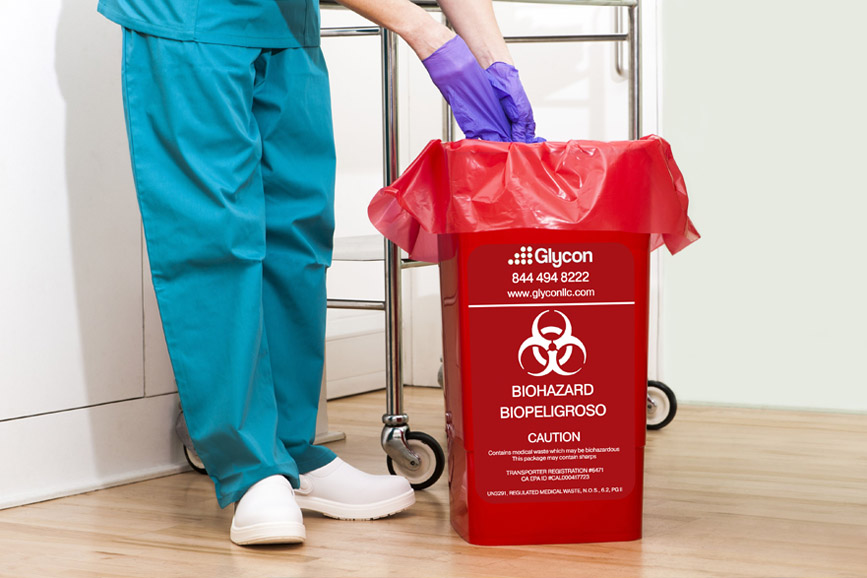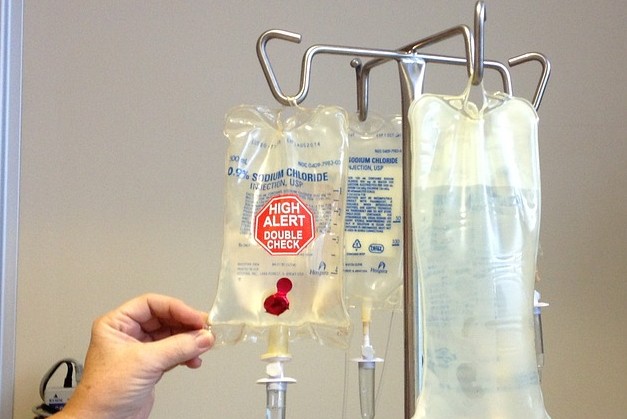Neighborhood Treatment: Seamless and Reliable Medical Waste Removal Near Me
Neighborhood Treatment: Seamless and Reliable Medical Waste Removal Near Me
Blog Article
Remain Ahead of Rules: Expert Recommendations on Medical Garbage Disposal
In a globe where the medical care market is frequently advancing, it is imperative for clinical centers to stay in advance of policies when it comes to the appropriate disposal of medical waste. From recognizing the different categories of clinical waste to applying the ideal collection and segregation approaches, this conversation will provide workable tips and beneficial insights to help facilities stay ahead of guidelines in the ever-changing landscape of clinical waste disposal.
Comprehending Clinical Waste Categories
Comprehending clinical waste classifications is necessary for proper disposal and monitoring in healthcare centers. Medical waste describes any type of waste generated by health care activities that may pose a risk to public health or the environment. It is essential to categorize clinical waste accurately to guarantee its secure handling, disposal, therapy, and transport.
There are several groups of clinical waste that healthcare facilities require to be acquainted with. The most typical classifications consist of contagious waste, pathological waste, sharps waste, pharmaceutical waste, and chemical waste. Each classification has details guidelines and policies for its appropriate management and disposal.
Transmittable waste includes materials contaminated with blood or various other bodily fluids, such as gloves, gowns, and research laboratory cultures. Pathological waste describes human cells, body organs, or body parts that require unique handling and disposal. Sharps waste includes made use of needles, syringes, and various other sharp items that can create injury and transfer infections. Drug waste consists of run out, extra, or infected drugs that need cautious handling and disposal. Chemical waste includes solvents, disinfectants, and various other chemical compounds made use of in health care centers.
Remaining Up-To-Date With Regulatory Modifications
Staying present with regulatory changes is vital for health care centers to ensure compliance and correct monitoring of clinical garbage disposal. medical waste removal. With regulations constantly advancing, it is crucial for health care centers to remain current to prevent penalties, fines, and potential injury to the setting and public wellness
To remain in advance of regulatory changes, health care facilities must develop a system for surveillance and monitoring updates. This can be done by signing up for regulatory newsletters, attending workshops and meetings, and actively participating in industry organizations. Furthermore, facilities must mark a team member or group responsible for remaining notified and disseminating details to appropriate stakeholders.
Regular communication with governing firms is likewise essential. Healthcare centers need to establish connections with neighborhood, state, and government companies to ensure they understand any type of changes in policies that might influence their waste administration practices. This can be done through regular conferences, participation in public comment durations, and aggressive engagement with regulatory agencies.
Moreover, healthcare centers ought to take into consideration partnering with waste administration business that focus on clinical garbage disposal (medical waste disposal services with WasteX). These companies are frequently skilled in the most recent laws and can give assistance and assistance to make sure conformity
Applying Appropriate Collection and Partition Techniques
To effectively handle clinical waste disposal, medical care centers need to establish correct collection and segregation approaches according to regulatory guidelines. Applying these techniques makes certain the risk-free handling and disposal of possibly dangerous products, shields the setting, and decreases the risk of infections and injuries to medical care employees and the general public.
Appropriate collection and partition techniques include making use of assigned containers and classifying systems. Health care centers need to supply clearly identified containers for different kinds of medical waste, such as sharps, transmittable waste, pharmaceutical waste, and non-hazardous waste. These containers need to be color-coded and plainly marked to stay clear of complication and promote very easy recognition.
Furthermore, health care centers need to train their staff on the correct procedures for accumulating and segregating medical waste. This includes educating them on the different sorts of waste, the suitable containers to utilize, and the relevance of complying with guidelines and guidelines. Regular training sessions and refresher programs must be conducted to make sure that personnel continue to be up-to-date on finest techniques.
Moreover, health care facilities must develop a system for regular collection and disposal of clinical waste. This might entail partnering with licensed waste monitoring business that concentrate on clinical waste disposal. These business will ensure that the collected waste is transferred and thrown away in compliance with regulatory demands.
Picking the Right Disposal Methods

Incineration is among one of the most common and effective techniques for throwing away certain sorts of medical waste, such as pathological waste and sharps. It includes the controlled combustion you could check here of waste at heats, reducing it to ash. Incineration can launch unsafe toxins right into the air and add to air contamination.

Chemical treatment includes the usage of chemicals to counteract the waste and disinfect. Microwave treatment uses microwave energy to warm and sanitize the waste.
Ensuring Compliance Through Paperwork and Training
After very carefully taking into consideration the ideal disposal approaches for medical waste, health care centers need to make certain conformity with laws and reduce ecological impact by executing reliable documents and training procedures. This action is essential in keeping a safe and lasting environment for both healthcare workers and the general public.

Medical care employees that handle medical waste should receive ideal training on waste segregation, taking care of, and disposal treatments. By giving thorough training, medical care you can look here centers can equip their personnel to make informed decisions and minimize the risk of improper waste disposal.
Verdict
To conclude, remaining ahead of policies in medical garbage disposal is crucial for medical care centers. medical waste removal. Recognizing the various classifications of medical waste, staying updated with regulative adjustments, applying appropriate collection and segregation methods, picking the appropriate disposal approaches, and making certain conformity with documentation and training are all important actions. By complying with these guidelines, healthcare companies can successfully handle and dispose of clinical waste in a liable and risk-free manner
From recognizing the different categories of clinical waste to executing the right collection and partition methods, this conversation will provide valuable understandings see page and actionable ideas to aid centers stay in advance of regulations in the ever-changing landscape of medical waste disposal. - medical waste disposal services with WasteX
The most common classifications include transmittable waste, pathological waste, sharps waste, pharmaceutical waste, and chemical waste. Medical care facilities ought to supply plainly classified containers for various kinds of medical waste, such as sharps, infectious waste, pharmaceutical waste, and non-hazardous waste. Health care facilities must develop a thorough system to videotape and track all elements of clinical waste disposal, consisting of kinds of waste created, amounts, and disposal approaches used. Healthcare workers who deal with medical waste ought to get suitable training on waste segregation, managing, and disposal treatments.
Report this page